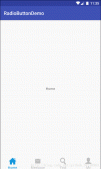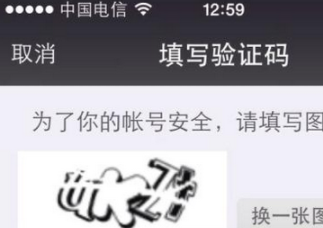Tv开发,最重要的当然是焦点框的移动,有了焦点框我们才能知道当前选中的是哪一个,我们来看下效果图:

那它是怎么实现的呢,我们一起来看下。
原理
布局上使用一个view,背景是.9图片做焦点框,选中一个控件的时候把这个view移动选中的控件的位置。怎么样,是不是很简单,行动起来。先看下布局
codeing
布局:
|
1
2
3
4
5
6
7
8
9
10
11
12
13
14
15
16
17
18
19
20
21
22
23
24
25
26
27
28
29
30
31
32
33
34
35
36
37
38
39
40
41
42
43
44
45
46
47
48
49
50
51
52
53
54
55
56
|
<?xml version="1.0" encoding="utf-8"?><FrameLayout xmlns:android="http://schemas.android.com/apk/res/android" xmlns:tools="http://schemas.android.com/tools" android:layout_width="match_parent" android:layout_height="match_parent" android:background="@color/colorAccent" tools:context=".MainActivity"> <LinearLayout android:layout_width="match_parent" android:layout_height="wrap_content" android:orientation="vertical"> <FrameLayout android:id="@+id/id_fl" android:layout_width="880dp" android:layout_height="76dp" android:layout_marginLeft="208dp" android:layout_marginTop="9dp" android:focusable="true"> <TextView android:layout_width="wrap_content" android:layout_height="wrap_content" android:layout_gravity="center_vertical" android:layout_marginLeft="40dp" android:text="第一行" android:textSize="28sp" /> </FrameLayout> <FrameLayout android:id="@+id/id_fl_2" android:layout_width="880dp" android:layout_height="76dp" android:layout_marginLeft="208dp" android:layout_marginTop="9dp" android:focusable="true"> <TextView android:layout_width="wrap_content" android:layout_height="wrap_content" android:layout_gravity="center_vertical" android:layout_marginLeft="40dp" android:text="第二行" android:textSize="28sp" /> </FrameLayout> </LinearLayout> <View android:id="@+id/id_focus" android:layout_width="wrap_content" android:layout_height="wrap_content" android:background="@drawable/settings_selector" android:visibility="gone" /></FrameLayout> |
最底下的View就是我们要用到的焦点框
代码
|
1
2
3
4
5
6
7
8
9
10
11
12
13
14
15
16
17
18
19
20
21
22
23
24
25
26
27
28
29
30
31
32
33
34
35
36
37
38
39
40
41
|
import android.app.Activity;import android.support.v7.app.AppCompatActivity;import android.os.Bundle;import android.util.Log;import android.view.View;import android.widget.FrameLayout;public class MainActivity extends Activity implements View.OnFocusChangeListener{ private String TAG ="qkmin"; private int Layout1 = R.id.id_fl; private int Layout2 = R.id.id_fl_2; private View onFousView; @Override protected void onCreate(Bundle savedInstanceState) { super.onCreate(savedInstanceState); setContentView(R.layout.activity_main); initViews(); } private void initViews() { FrameLayout frameLayout=findViewById(Layout1); FrameLayout frameLayout2=findViewById(Layout2); onFousView = findViewById(R.id.id_focus); //设置焦点变化监听 frameLayout.setOnFocusChangeListener(this); frameLayout2.setOnFocusChangeListener(this); } @Override public void onFocusChange(View v, boolean hasFocus) { if (hasFocus){ Log.i(TAG,"onFocusChange"+v.getId()); //设置焦点框的位置和动画 Tools.focusAnimator(v,onFousView); } }} |
我们来看下Tools 这个类:
|
1
2
3
4
5
6
7
8
9
10
11
12
13
14
15
16
17
18
19
20
21
22
23
24
25
26
27
28
29
30
31
32
33
34
35
36
37
38
39
40
41
42
43
44
45
46
47
48
49
50
51
52
53
54
55
56
57
58
59
60
61
62
63
64
65
66
67
68
69
70
71
72
73
74
75
76
77
78
79
80
81
82
83
84
85
86
87
88
89
90
91
92
93
94
95
96
97
98
99
100
101
|
import android.animation.Animator;import android.animation.AnimatorSet;import android.animation.ObjectAnimator;import android.animation.ValueAnimator;import android.view.View;import android.view.ViewGroup;public class Tools { private static int mFocusWidth; private static int mFoucsHeight; public static void focusAnimator(View v, View onFousView) { focusAnimator(v, onFousView, -1, 0, 0); } public static void focusAnimator(View parentView, final View focusView, int scrollY, int offSetX, int offSetY) { int[] fromLocation = new int[2]; focusView.getLocationOnScreen(fromLocation); int fromWidth = focusView.getWidth(); int fromHeight = focusView.getHeight(); float fromX = fromLocation[0]; float fromY = fromLocation[1]; int[] toLocation = new int[2]; parentView.getLocationOnScreen(toLocation); int toWidth = parentView.getWidth() + offSetX; int toHeight = parentView.getHeight() + offSetY; float toX = toLocation[0] - offSetX / 2; float toY = toLocation[1] - offSetY / 2; if (scrollY == -1) { if (focusView.getVisibility() == View.GONE) focusView.setVisibility(View.VISIBLE); } AnimatorSet animatorSet = new AnimatorSet(); ObjectAnimator translateXAnimator = ObjectAnimator.ofFloat(focusView, "x", fromX, toX); translateXAnimator.addListener(new Animator.AnimatorListener() { @Override public void onAnimationStart(Animator animation) { } @Override public void onAnimationRepeat(Animator animation) { } @Override public void onAnimationEnd(Animator animation) { if (focusView.getVisibility() == View.GONE) { focusView.setVisibility(View.VISIBLE); } } @Override public void onAnimationCancel(Animator animation) { if (focusView.getVisibility() == View.GONE) focusView.setVisibility(View.VISIBLE); } }); ObjectAnimator translateYAnimator = ObjectAnimator.ofFloat(focusView, "y", fromY, toY); ValueAnimator scaleWidthAnimator = ObjectAnimator.ofFloat(focusView, "width", fromWidth, toWidth); scaleWidthAnimator.addUpdateListener(new ValueAnimator.AnimatorUpdateListener() { @Override public void onAnimationUpdate(ValueAnimator animation) { float width = (Float) animation.getAnimatedValue(); mFocusWidth = (int) width; ViewGroup.LayoutParams layoutParams = focusView.getLayoutParams(); layoutParams.width = mFocusWidth; layoutParams.height = mFoucsHeight; focusView.setLayoutParams(layoutParams); } }); ValueAnimator scaleHeightAnimator = ObjectAnimator.ofFloat(focusView, "height", fromHeight, toHeight); scaleHeightAnimator.addUpdateListener(new ValueAnimator.AnimatorUpdateListener() { @Override public void onAnimationUpdate(ValueAnimator animation) { float height = (Float) animation.getAnimatedValue(); mFoucsHeight = (int) height; ViewGroup.LayoutParams layoutParams = focusView.getLayoutParams(); layoutParams.width = mFocusWidth; layoutParams.height = mFoucsHeight; focusView.setLayoutParams(layoutParams); } }); animatorSet.playTogether(translateXAnimator, translateYAnimator, scaleWidthAnimator, scaleHeightAnimator); animatorSet.setDuration(150); animatorSet.start(); }} |
主要方法是focusAnimator(),首先获取focusView的宽、高,以及x ,y 坐标,在得到获取焦点的view的宽、高,以及x ,y 坐标,最会设置动画。这样就Ok了。
下面是项目地址:https://gitee.com/love_k/FocusTest.git
以上就是本文的全部内容,希望对大家的学习有所帮助,也希望大家多多支持服务器之家。
原文链接:https://www.jianshu.com/p/f5c4345238e8?utm_source=tuicool&utm_medium=referral
















